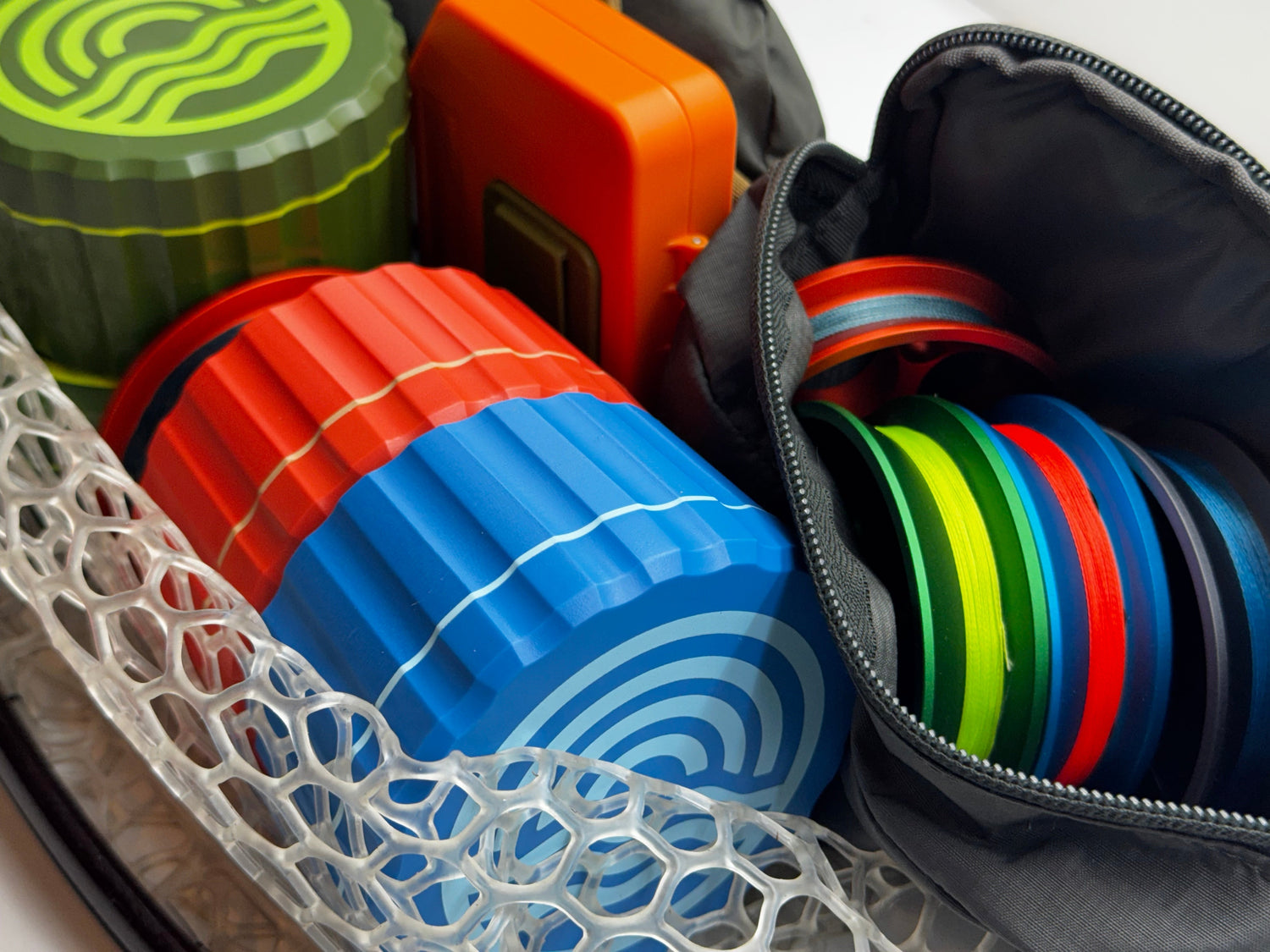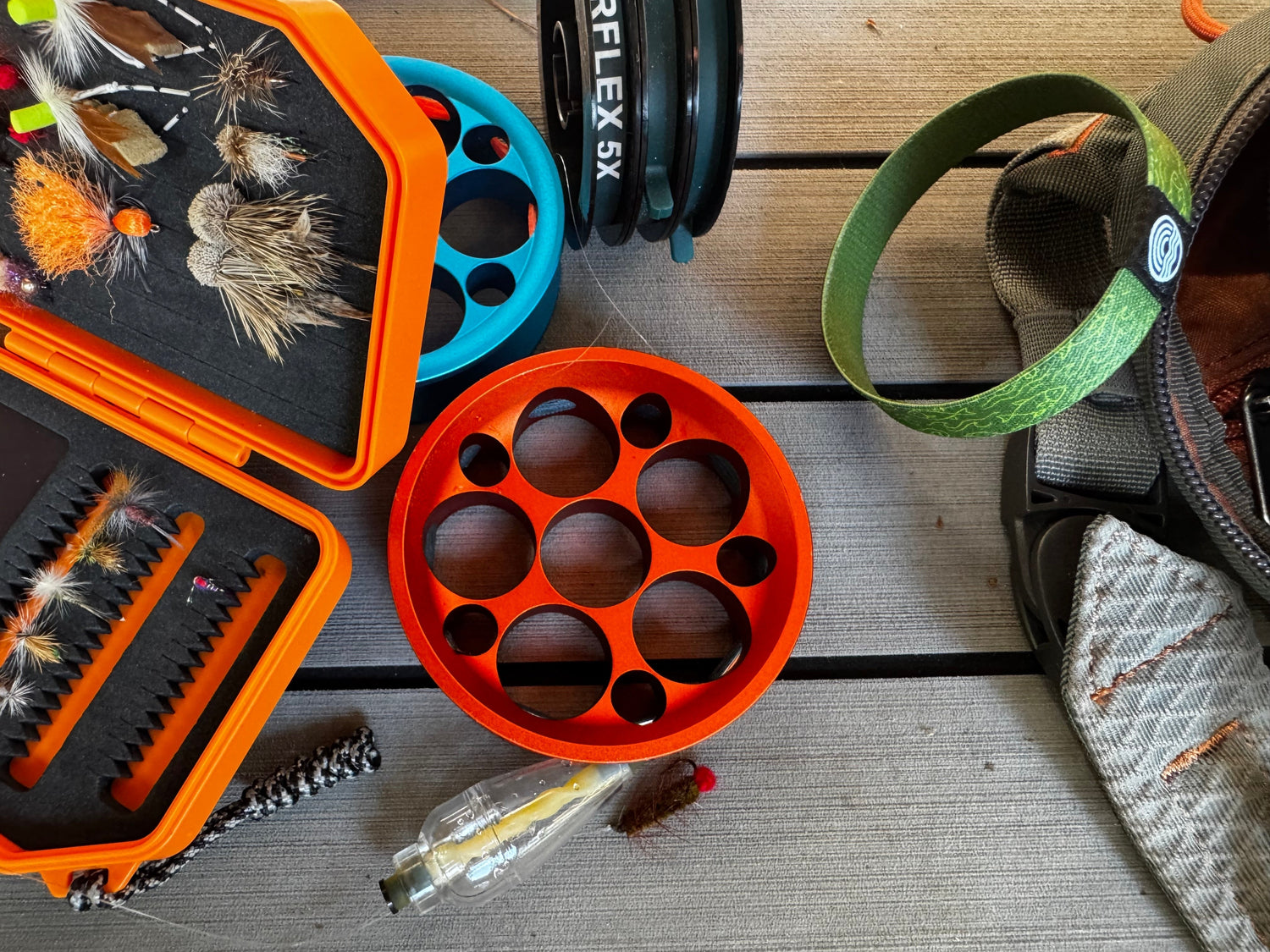Understanding the GoReel Casting Technique
The GoReel casting technique is fundamental to successful hand reel fishing. It emphasizes a direct connection with your gear and the environment, offering a simple yet effective way to present your lure. This method is distinct from traditional rod-and-reel casting and is designed for precision and control with minimalist equipment.
This guide will provide a clear, step-by-step approach to mastering the GoReel cast, focusing on the correct mechanics and a more informative tone, while retaining a touch of the Crystal Creek Gear personality.
Why This Casting Method Works
The GoReel casting technique, centered around a backhand toss motion, offers several advantages for the hand reel angler:
- Intuitive Motion: The technique is based on a natural throwing motion, making it relatively easy to learn.
-
Versatility: It can be adapted for various fishing environments, from tight streams to open lakes.
-
Precision: Allows for accurate lure placement, crucial for targeting specific structures or feeding zones.
-
Efficiency: Requires minimal physical effort once mastered, allowing for longer fishing sessions.
-
Adaptability: The core motion can be modified for different lure weights and casting distances.
Essential Gear for GoReel Casting
To effectively practice and utilize the GoReel casting technique, ensure you have the following:
- GoReel Hand Reel: The central component of your setup, designed for simplicity and direct line control.
-
Line: A quality 8-10 lb braided line is recommended. This range offers a good balance of strength and castability for most situations.
-
Lures: Lightweight to medium-weight lures, typically in the 1/16 oz to 3/8 oz range, are ideal. This includes small spinners, jigs, and soft plastics.
The GoReel Cast: Step-by-Step Instructions
Accuracy and consistency in your cast come from understanding and practicing these core mechanics:
1. Holding the Reel and Line
Proper grip is the foundation of a good cast:
- Reel Grip: Hold the GoReel firmly in your non-dominant hand. Your grip should be comfortable yet secure.
-
Line Grip: With your dominant hand, grip the fishing line approximately 6-8 inches behind the lure. This is your primary control point for the cast.
-
Line Length Between Hands: Maintain about 2-3 feet of line between your non-dominant hand (holding the reel) and your dominant hand (holding the line near the lure). This length provides the necessary leverage for the cast.
2. Stance and Positioning
Your body position contributes to balance and accuracy:
- Stand with your feet shoulder-width apart, facing roughly 90 degrees away from your intended target. If you are right-handed, your left shoulder will point towards the target.
-
Maintain a slight bend in your knees for stability.
-
The hand reel (in your non-dominant hand) should be facing out towards where you want the lure to go.
3. The Casting Motion
This is the dynamic part of the technique:
- The Toss: Using your dominant hand (the one holding the line near the lure), execute a smooth, sweeping motion across your body. This motion is similar to throwing a frisbee with a backhand technique.
-
The movement should originate from your core and shoulder, not just your arm, to generate controlled power.
4. Aiming and Release
Precision comes from coordinating your aim and release:
-
Aiming: As you perform the sweeping motion, your eyes should be focused on the target. Your body and arm movement will naturally guide the lure in that direction.
-
Reel Orientation: Ensure the GoReel in your non-dominant hand remains facing out towards your target throughout the cast. This allows the line to unspool smoothly.
-
Line Release: Release the line from your dominant hand at the optimal point in your swing to send the lure towards the target. The timing of this release is crucial for accuracy and distance. Releasing too early will send the lure high or to one side; releasing too late will drive it downwards or to the other side.
5. Follow-Through and Line Management
A good follow-through ensures a smooth cast and prepares you for the retrieve:
- Allow your dominant hand to follow through naturally in the direction of the cast.
-
As the lure flies, line will unspool from the GoReel. Be prepared to manage any slack line with your non-dominant hand once the lure lands.
Common Casting Issues and Solutions
-
Issue: Inconsistent accuracy.
-
Solution: Focus on a smooth, consistent casting motion. Ensure your eyes remain on the target throughout the cast. Practice your release timing.
-
Issue: Insufficient casting distance.
-
Solution: Ensure you are using the correct amount of line between your hands (2-3 feet). Generate power from your core and shoulder rotation, not just your arm. Experiment with slightly different release points.
-
Issue: Line tangles on the reel.
-
Solution: Ensure the line is spooled evenly on the GoReel. Avoid jerky movements during the cast. Maintain slight tension on the line as it unspools.
Adapting Your Cast to Different Environments
-
Tight Spaces/Overhanging Cover: Utilize a more compact casting motion, focusing on a lower trajectory by adjusting your release point and the angle of your cast.
-
Open Water/Windy Conditions: A more assertive and slightly lower, more powerful cast may be needed to cut through wind and achieve greater distance. Ensure your reel remains oriented towards the target to minimize wind interference with the line.
Practice Drills for Improvement
-
Target Practice: Set up targets (e.g., buckets, markers) at various distances and practice casting to them. Start with larger targets at closer ranges and gradually decrease target size and increase distance as your accuracy improves.
-
Consistency Drills: Focus on making 10 consecutive casts to the same target area. This helps refine muscle memory and release timing.
Conclusion: The Path to GoReel Casting Proficiency
Mastering the GoReel casting technique is a rewarding process that enhances your connection to the minimalist fishing experience. It requires patience and practice, but by focusing on the correct mechanics—holding the reel in your non-dominant hand, gripping the line 6-8 inches behind the lure with your dominant hand, maintaining 2-3 feet of line between your hands, executing a frisbee-like backhand toss across your body, and keeping the hand reel aimed towards your target—you will develop the accuracy and control needed for successful hand reel fishing.
This technique is not just about casting; it’s about embracing a more direct and engaging way to fish. As you refine your skills, you’ll find that the GoReel becomes an intuitive extension of your hand, allowing you to place your lure precisely where you want it, every time.





